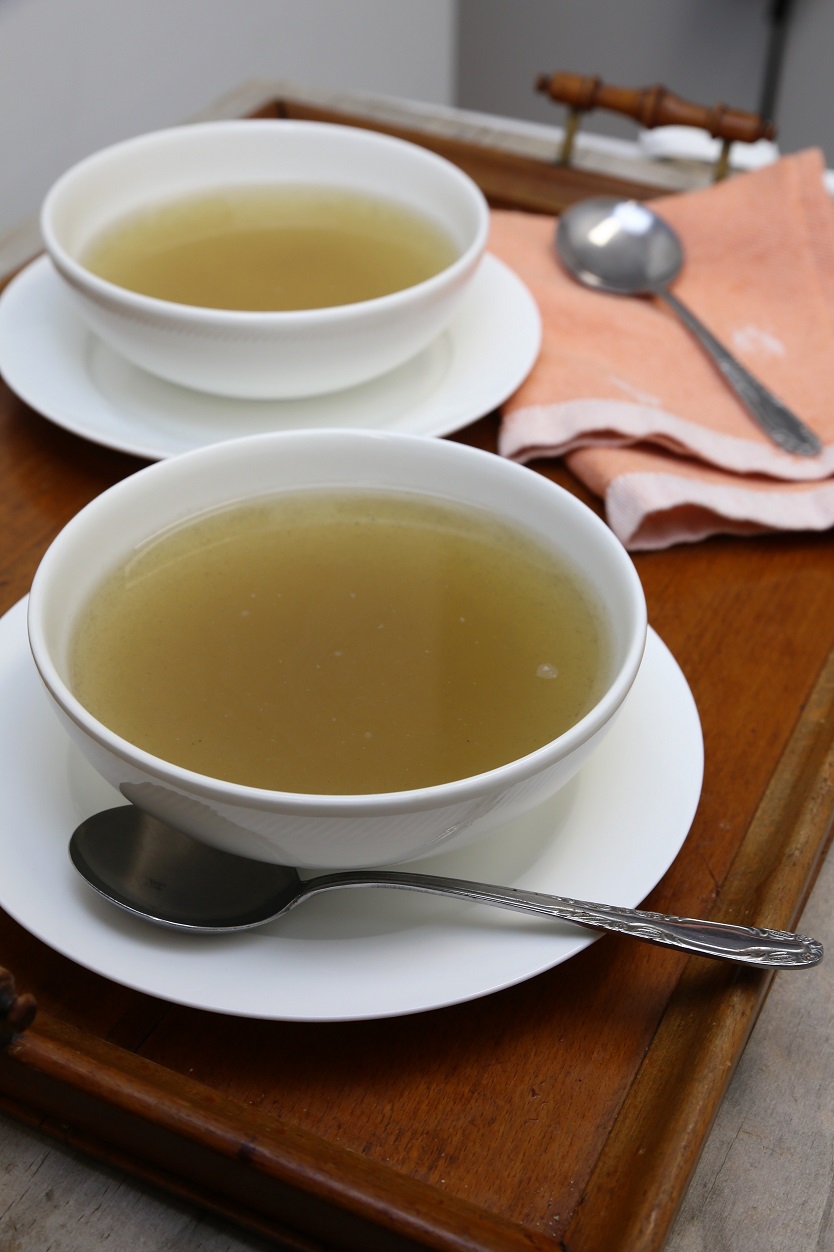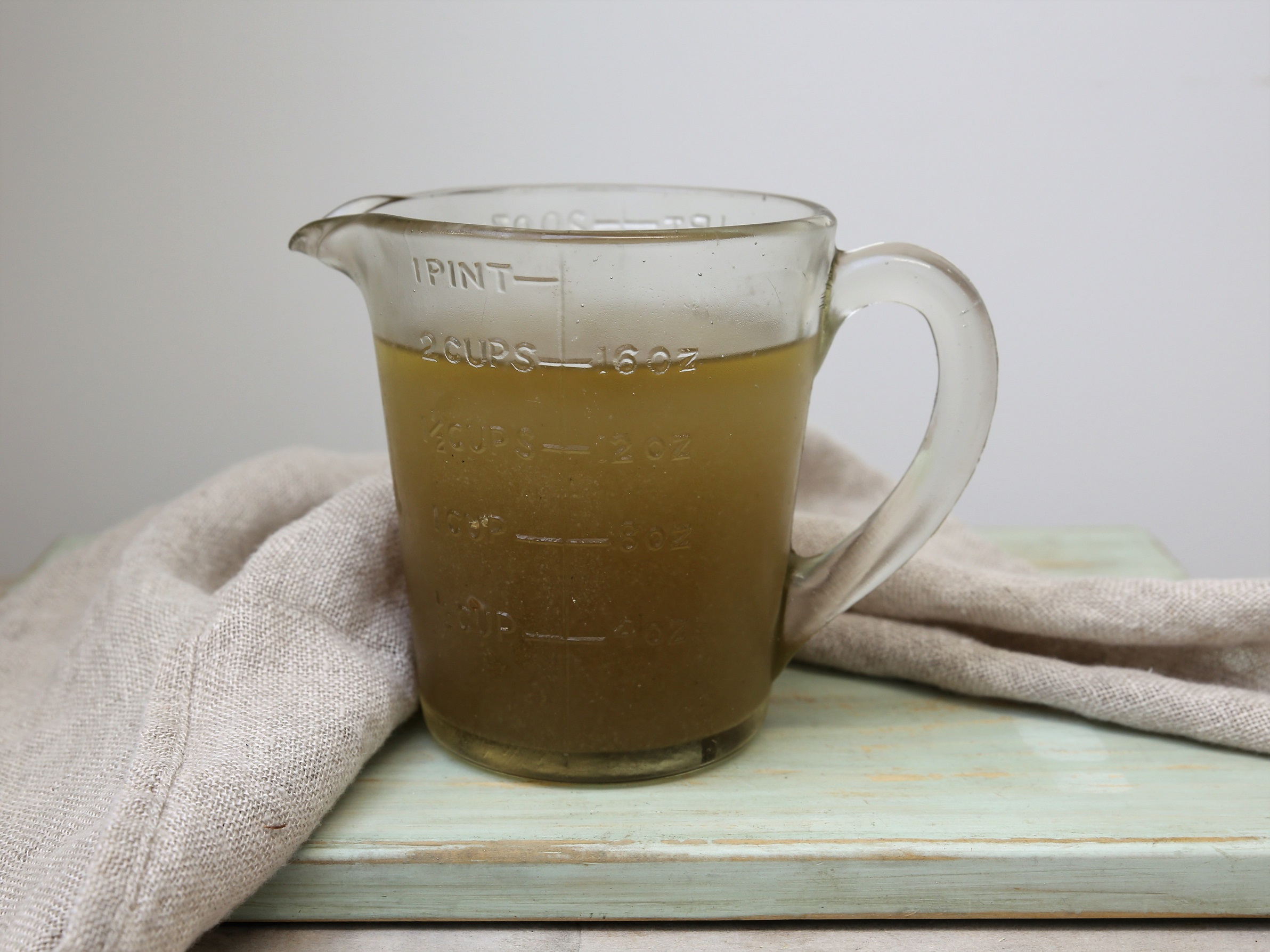- Home
- Posts
- Recently Updated
- How to make your own soup stock and bone broth
How to make your own soup stock and bone broth
Written by Catherine Saxelby
on Wednesday, 29 July 2015.
Tagged: family fare, guides, healthy cooking, healthy eating, healthy recipes, meal planning, soup, tips

There’s nothing’s more comforting than a bowl of hot, hearty, home-made soup on a cold winter’s day. I’m a huge fan of soup and I’d love to share what I reckon is the secret of a really good soup. Yes, it’s the underlying base stock that gives a soup that wonderful richness and savoury delicious-ness. Here’s how I get that quality into my own soups, without overloading my body with excess salt.
Stock or broth helps your weight
Stock, whether chicken, beef, fish or vegetable, is a great flavour booster for anyone watching their weight. It has a tiny, one per cent fat, almost no carbs, plus significant amounts of potassium and other minerals extracted from all those bones and vegetables.
There are so few kilojoules/Calories (under 125 kJ or 30 Cals for a cup) that it’s often on lists of ‘Free foods’ on weight loss diets.
It has little or no fibre but this is not a problem as it’s used in soups with lots of vegetables and legumes such as split peas, lentils or soup mix.
Stock or broth is a basic kitchen ingredient that you can use to make soups, risottos and gravy interesting and flavoursome. Think savoury and ‘umami’. It’s the key ingredient that chefs pride themselves on!
One big drawback
Stock's only drawback is the added salt, but if you make it yourself, you control how much salt you season it with. It can be virtually none (important if you’re on a low-salt diet), or just enough to round off the flavour.
Interestingly, even with a little salt, your own stock or broth is still likely to be low in salt (sodium) compared with a commercial stock. Most have more than 400 mg per 100 grams unless you shop for one that’s “salt-reduced”.
In recent years, most manufacturers have gradually dropped their salt to between 200 and 400 mg, which is great. You won’t notice the difference as they’ve done it slowly, and have boosted the flavour with other ingredients. The only problem then is that it’s ‘processed’ and contains thickeners and MSG.
Giving up commercial stock
When stretched for time, I used to reach for ready-made, liquid stock to make up my minestrone or lentil and pumpkin soup. Those square tetra-blocks or pouches of liquid stock are not bad. They can be a handy fall-back when there’s no time to make your own. Infinitely better than (shudder) instant stock powder or stock cubes.
However, I recently took stock (pardon the pun) of my dependency on commercial stock. I decided to ‘walk the talk’ and get better organised, so I’ve switched to making my own and having it ready to use in the freezer.
Stocking up on stock
It isn’t hard. You just throw everything into a large stock pot or slow-cooker, simmer and forget. Every cookbook has a similar recipe – gently heat bones along with onion, celery tops, turnip, a carrot and some mixed herbs e.g. parsley, thyme, marjoram or other woody herbs. Add enough cold water to cover and simmer for an hour or so.
For a darker stock, brown your chicken or beef bones in the oven first. Don’t overlook the bones, as the cartilage and connective tissue in the bones are the key to a rich flavour. The bones contain collagen, which is converted into gelatine during cooking that eventually thickens the liquid in a way that flour or starch can never achieve. Perfect for a clear beef broth or French onion soup.
Another bonus. You waste less! All those lovely vegetable off-cuts - including onion skins and peelings – can be used.
Cool and freeze your finished stock for later. We like to store it in containers of two cups (half a litre) or four cups (1 litre) but you can freeze whatever is the right amount for your soup recipes.
 My own chicken stock recipe
My own chicken stock recipe
This is how my mother used to make chicken stock or broth for us.
Ingredients
2 kg chicken carcass or wings
2 carrots, chopped
4 stalks celery
1 large onion, chopped
4-6 garlic cloves
1 tablespoon whole black peppercorns
few sprigs of parsley
2 bay leaves
about 2 litres water
Directions
- Place the chicken in a large stock pot with the carrots, celery, onion, garlic, peppercorns and parsley. Cover with water and bring to the boil.
- Reduce the heat and simmer, covered, for about 2 hours. Periodically skim off the foam as it rises to the surface.
- Strain the stock through a sieve and chill for a few hours. Any fat will rise to the surface and solidify after which it can be easily skimmed off. Your stock is now ready for use or for the freezer. Freeze in one or two-cup portions ready to add to a recipes.
Ingredients in commercial stocks
Stock is pretty much water plus flavouring. Here are the ingredients in a good quality, salt-reduced, commercial liquid chicken stock (500mL tetra-pack) e.g. Campbells:
| Chicken stock 98% (water, chicken, carrot, celery, cabbage, onion, sage extract, parsley), sugar, salt, yeast extract. |
Here are the ingredients in a Woolworths Gold (supermarket) home-brand chicken stock:
| Water, chicken bones 26%, vegetables (onions, carrots, celery, garlic), parsley, pepper, thyme. |
What pre-packaged brand do I recommend?
When there’s no time, bought stocks are convenient but can be high in salt, although manufacturers have lowered the salt they use in recent years, which is good.
I like the Maggie Beer beef stock which has no salt at all. You can often find Moredough stock more widely available and it is always good. There’s also The Stock Merchant with lots of flavours such as veal, shellfish and fish as well as the usual beef, chicken and vegetable.
The two big supermarkets also offer their own home-brand stocks in the 500mL soft pouch and these get better and better whilst being less costly than the others.
Here’s what I look for in a commercial liquid stock:
- plain, simple, ingredients such as chicken, onion, carrot, celery, garlic, parsley, pepper and thyme or other herbs on the Ingredient List. Avoid ones with MSG 621, or Flavour enhancer 635, or added ‘flavours’ that aren’t specified, or Yeast extract.
- no added salt (compare brands and choose the one with the lowest sodium figure, e.g. less than 120mg per 100 grams). Or look for ones labelled ‘salt-reduced’ with a sodium level of less than 300 mg per 100 grams.
- a pleasant aroma and agreeable taste on its own. (Hard to know this until you’ve bought it but you’ll know for next time.) Sometimes you can achieve a decent flavour just by adding water, you don’t need to add commercial stock.
Foodwatch
The Good Stuff
The Boring Stuff
© 2025 Foodwatch Australia. All rights reserved
Website by Joomstore eCommerce






